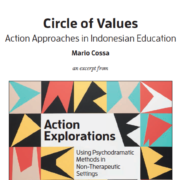By Mario Cossa, RDT/MT, TEP
Norman Garmezy, Ph.D., a Developmental Psychologist from the University of Minnesota, is generally credited with the seminal research on resilience and attempts to define what are now called protective factors—those aspects and experiences in a person’s life that equip them with
the ability to rise above adversity (Konnikova, 2016). Unfortunately, his untimely death caused the publication of his research findings to be posthumous.
In 1989, the results of a three-decades-long, intensive study on resilience were published by Emmy Werner, also a Developmental Psychologist (Konnikova, 2016). Her findings showed that a combination of environmental factors (such as the presence of a positive, caring adult in the lives of her subjects) as well as particular elements of personality (especially a belief in one’s own ability to affect the outcome of life situations) each had significant impact on the development of resilience.
In my work with adolescents both in the USA and in numerous countries around the globe, I have found the Therapeutic Spiral Model™’s (TSM) form of psychodrama (Hudgins, 2019) to be an effective tool for developing and enhancing resilience in youth from diverse backgrounds and cultures (Cossa, 2019, 2006). This article focuses on a specific intervention strategy developed for working with a group of youth in Bali, Indonesia.

